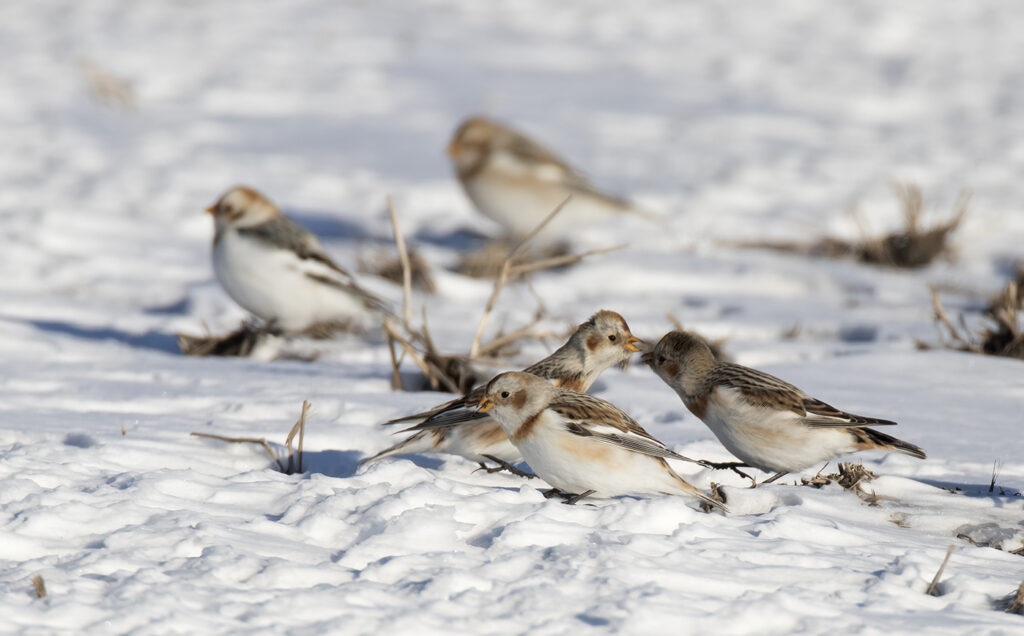
February 8, 2022 – Snow buntings migrate to the lower 48 each year to escape the howling winds that push blinding blizzards and deadly cold temperatures in the northern latitudes turning their summer range on the Arctic tundra into a bleak and inhospitable place for the little birds. Even during the nesting season, the high Arctic can be a hostile place where temperatures dip into the negative 20s and 30s, challenging the early spring arrivals. Snow buntings have adapted like other animals of the north. The mostly white-feathered male buntings in their breeding plumage become somewhat invisible on a snow-covered spring landscape, a necessary adaptation to go unnoticed for the ground-nesting birds. They build their nests in the cracks and crevasses among the rocks. The buntings line them with fur and feathers for insulation. The little white birds are sometimes called Snowflakes, perhaps like real snowflakes, they show up during the winter, and a large flock of these little white birds swirling through the air can give only one perception. Snow buntings persevere in an unforgiving world of extremes. When they finally leave the Arctic for their summer range, they travel as far south as the Texas panhandle and east to the Carolinas. It can be easy to miss these sparrow-sized winter migrants feeding in the harvested winter fields of the Midwest unless they take to the air. But when the snows finally come and cover the agricultural expanse, here in northeastern Illinois, the migratory birds like Lapland longspurs and the beautiful Snow buntings appear at the roadway’s edge, where the snowplow has scraped bare the ground, and where the little birds can search for seeds. Snow buntings are sometimes only found one or two mixed in with a flock of longspurs, and some years there can be large flocks of hundred or more seen taking advantage of a good winter food source. Each year is different when it comes to finding Snow buntings, some years, you may be lucky to see even a single bird, but there are years when there are large foraging flocks in our rural areas. The hard truth is that Snow buntings, according to research studies, are in decline, and the world population has dropped 60% over the last 45 years. Climate change, pesticides, and the loss of habitat have certainly been a quantitative threat to many species around the globe, and the little Snowflake is no exception. The recently reported and highly concerning rapid warming of the Arctic brings a whole new set of questions for researchers.
